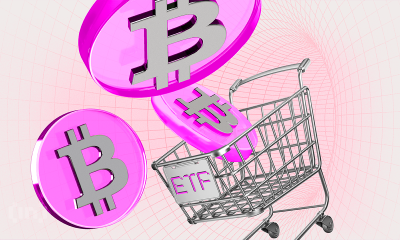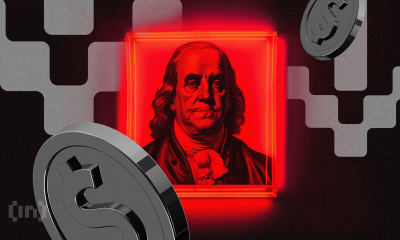Market
Gensler’s Exit, Bitfinex Hack, Bitcoin in the US


The crypto market recorded several important developments this week, from regulatory advancements to significant legal rulings. Taken together, the highlights display how the global cryptocurrency ecosystem continues to advance.
The following is a roundup of crucial developments that happened this week but will continue shaping the sector.
Gary Gensler’s to Resign as SEC Chair
Gary Gensler, Chair of the US Securities and Exchange Commission (SEC), announced his resignation effective January 2025. The crypto industry had long anticipated his departure, which marks the end of a controversial tenure characterized by a strict approach to digital asset regulation.
“On January 20, 2025, I will be stepping down as SEC Chair,” he shared.
Gensler’s tenure saw multiple enforcement actions against crypto companies, leading to heightened scrutiny of projects like XRP, Solana, Cardano, and others. Against this backdrop, news of his imminent resignation had a notable impact on the cryptocurrency market. XRP, a token at the center of the SEC’s lawsuit against Ripple, and Solana (SOL) experienced significant rallies.
The rallies came as the crypto industry now anticipates a leadership change that could introduce clearer frameworks for digital assets. Gensler’s departure coincides with ongoing calls for balanced regulation, offering hope for less adversarial interactions between regulators and the crypto community.
US Eyes Crypto-Czar Role
The Trump administration is reportedly considering appointing a “crypto-czar” to shape and lead the nation’s approach to digital assets. Chris Giancarlo, the former chair of the Commodity Futures Trading Commission (CFTC), is among those under discussion for the role.
Other considerations include Coinbase CEO Brian Armstrong, who drew significant support from Cardano’s Charles Hoskinson. Similarly, Brian Brooks, former BinanceUS and Coinbase executive, is also on the list of considerations.
Beyond the crypto-czar role, Trump’s social media and technology company is also in talks to purchase crypto exchange Bakkt. The general sentiment is that purchasing Bakkt could bring Trump fresh skin in the game.
Russia’s Crypto Policy Shake-Up
As BeInCrypto reported, Russia has revised its crypto taxation bill, introducing measures to regulate and tax crypto transactions more effectively. The country has also banned crypto mining in occupied Ukrainian territories, citing security concerns.
“Starting Dec 2024, Russia’s Energy Ministry is clamping down on mining rigs in energy-stressed zones like Irkutsk, Chechnya, and DPR. The takeaway’s clear: energy ≠ infinite, and miners might need to get stealthy or pivot,” Mario Nawfal wrote on X (formerly Twitter).
These developments reflect Russia’s dual approach of harnessing crypto’s economic potential while maintaining stringent control over its use. Analysts warn that these policies could stifle innovation while ensuring compliance with state interests.
Bitfinex Hack Case: Couple Sentenced
BeInCrypto also reported on the US legal system’s sentencing of Heather Morgan, the wife of Ilya Lichtenstein, to prison for the infamous 2016 Bitfinex hack. This sentencing came shortly after Lichtenstein’s sentencing to five years in prison.
Morgan and her husband attempted to launder the loot through various means, including buying gold and NFTs. Of note, Lichtenstein’s sentence was far below his potential 20-year maximum, as he also cooperated significantly with the authorities.
These sentences reflect the ongoing efforts to bring crypto-related crimes to justice. It also highlights the importance of strong security and regulatory oversight in the industry. Notwithstanding, the 2016 Bitfinex attack remains one of the largest cryptocurrency thefts in history.
OCC Approves Bitcoin ETF Options Trading
This week, the Options Clearing Corporation (OCC) also approved Bitcoin ETF (exchange-traded funds) options trading. This decision marked a significant regulatory milestone in the US financial markets. This approval enhances market liquidity, providing institutional and retail investors with greater flexibility to hedge risks.
The move is expected to catalyze broader acceptance of Bitcoin ETFs, potentially driving increased trading volumes and market participation. Analysts believe this approval could pave the way for further advancements in Bitcoin-related financial products.
Author of “Softwar” Enters Presidential Race
To add to this list of interesting things that happened in the crypto market this week, Jason Lowery, the author of Softwar, is eyeing a position in the White House. His bid centered on Bitcoin adoption and national security. Lowery advocates for Bitcoin as a strategic asset, reflecting its potential to fortify the US against global economic uncertainties.
His interest reflects the growing intersection of politics and crypto as policymakers recognize Bitcoin’s strategic implications beyond its financial utility.
“I recommend Maj Jason Lowery for presidential advisor on the Advancement of Bitcoin as a National Strategic Asset,” one user on X pushed.
Grayscale’s Bitcoin Covered Call ETF
Further, Grayscale updated its Bitcoin Covered Call ETF, enhancing its utility for investors seeking income generation strategies. The ETF employs options strategies to provide returns, offering a unique way for investors to capitalize on Bitcoin’s volatility.
This product demonstrates the continued innovation in crypto financial instruments, catering to diverse investor needs amidst a fast-paced market.
“Grayscale wasting no time after BTC ETF options approval. They’ve filed an updated prospectus for their Bitcoin Covered Call ETF (no ticker yet). The fund will offer exposure to GBTC and BTC while writing and/or buying options contracts on Bitcoin ETPs for income,” James Seyffart remarked.
China Recognizes Crypto as Property
A landmark legal ruling also passed among top crypto news this week. As it happened, a Chinese court recognized cryptocurrency as legal property. The determination granted protections to crypto holders, with the decision coming amid China’s stringent crypto regulations. It offers a glimmer of hope for crypto enthusiasts in the region.
This ruling could influence future regulatory approaches, balancing state control with individual rights in the digital economy.
Paul Tudor Jones Doubles Down on Bitcoin
Additionally, hedge fund manager Paul Tudor Jones reaffirmed his commitment to Bitcoin this week. Jones revealed a continued stake in Bitcoin, citing the asset’s resilience amid economic uncertainty. The endorsement highlights Bitcoin’s enduring appeal among institutional investors, reinforcing its status as “digital gold” in turbulent financial landscapes.
“Billionaire hedge fund manager Paul Tudor Jones: All roads lead to inflation … I’m long gold, I’m long Bitcoin, I’m long commodities,” Michael Burry said, citing Jones.
His firm, Tudor Investment Corporation, also significantly increased its Bitcoin reserves, emphasizing its role as a hedge against inflation and geopolitical risks.
Poland’s Bitcoin Reserve Proposal
Beyond Paul Tudor Jones, another show of support for Bitcoin this week came from Polish lawmaker Sławomir Mentzen. The Presidential aspirant vowed to establish a Bitcoin reserve if elected, signaling a potential crypto-friendly policy shift in Poland.
“Poland should create a Strategic Bitcoin Reserve. If I become the President of Poland, our country will become a cryptocurrency haven, with very friendly regulations, low taxes, and a supportive approach from banks and regulators,” Mentzen shared.
His vision includes embracing Bitcoin as a hedge against economic instability and fostering blockchain innovation to strengthen the national economy. His proposal resonates with growing trends among nations exploring Bitcoin adoption to safeguard financial sovereignty.
Mentzen’s promise reflects a rising sentiment across Europe toward leveraging crypto for economic resilience. If realized, this policy could position Poland among a handful of nations integrating Bitcoin into their fiscal strategies. It would also signal a pivotal shift in European crypto policy frameworks.
Disclaimer
In adherence to the Trust Project guidelines, BeInCrypto is committed to unbiased, transparent reporting. This news article aims to provide accurate, timely information. However, readers are advised to verify facts independently and consult with a professional before making any decisions based on this content. Please note that our Terms and Conditions, Privacy Policy, and Disclaimers have been updated.
Market
Report Alleges Massive Meme Coin Sniping on Pump.fun

According to a new report from Pine Analytics, token deployers on Pump.fun systematically funded sniper wallets to buy their own meme coins. This impacted over 15,000 token launches on the platform.
These sniper wallets operated primarily during US trading hours, executing standardized, profitable strategies. Unrelated bot activity obscures their behavior, making it extremely difficult to isolate these wallets—and they can readily adapt to new countermeasures.
Snipers Roam Free on Pump.fun Meme Coins
Pump.fun has remained one of the most popular meme coin launchpads on Solana despite persistent controversies and other criticism.
However, Pine Analytics’ new report has uncovered a new controversy, discovering systematic market manipulation on the platform. These snipes include as much as 1.75% of all launch activity on Pump.fun.
“Our analysis reveals that this tactic is not rare or fringe — over the past month alone, more than 15,000 SOL in realized profit was extracted through this method, across 15,000+ launches involving 4,600+ sniper wallets and 10,400+ deployers. These wallets demonstrate unusually high success rates (87% of snipes were profitable), clean exits, and structured operational patterns,” it claimed.
Solana meme coin deployers on Pump.fun follow a consistent pattern. They fund one or more sniper wallets and grant them advance notice of upcoming token launches.
Those wallets purchase tokens in the very first block and then liquidate almost immediately—85% within five minutes and 90% in just one or two swap events.

Pump.fun meme coin developers exploit this tactic to create the appearance of immediate demand for their tokens. Retail investors, unaware of the prior sell‑off, often purchase these tokens after the snipe, giving developers an unfair advantage. This constitutes market manipulation and erodes trust in the platform.
Pine Analytics had to carefully calibrate its methods to identify genuine snipers. Apparently, 50% of meme coin launches on Pump.fun involve sniping, but most of this is probably bots using the “spray and pray” method.
However, by filtering out snipers with no direct links to developer wallets, the firm missed projects that covered their tracks through proxies and burners.
In other words, the meme coin community does not have adequate defenses against systematic abuse on Pump.fun. There are a few possible ways that the platform could flag repeat offenders and sketchy projects, but adaptive countermeasures could defeat them. This problem demands persistent and proactive action.
Unfortunately, it may be difficult to enact such policies. Meme coin sniping is so systematic that Pump.fun could only fight it with real commitment.
Analysts think that building an on-chain culture that rewards transparency over extraction is the best long-term solution. A shift like that would be truly seismic, and the meme coin sector might not survive it.
Disclaimer
In adherence to the Trust Project guidelines, BeInCrypto is committed to unbiased, transparent reporting. This news article aims to provide accurate, timely information. However, readers are advised to verify facts independently and consult with a professional before making any decisions based on this content. Please note that our Terms and Conditions, Privacy Policy, and Disclaimers have been updated.
Market
Solana Leads Blockchain Metrics as SOL Momentum Builds

Solana (SOL) continues to show strength across multiple fronts, maintaining a bullish structure on its Ichimoku Cloud chart while gaining momentum in key market metrics. The BBTrend indicator has turned higher again, signaling renewed buying pressure after a brief cooldown.
On-chain activity remains strong, with Solana leading all blockchains in DEX volume and dominating fee generation thanks to the explosive growth of meme coins and launchpad activity. With SOL now trading above a key resistance level, the path is open for further upside—though a loss of momentum could still trigger a retest of lower supports.
Solana Maintains Bullish Structure, but Momentum Faces Key Test
On Solana’s Ichimoku Cloud chart, the price is currently above the Kijun-sen (red base line) but has dipped below the Tenkan-sen (blue conversion line), signaling weakening short-term momentum.
The flattening Tenkan-sen and price behavior suggest possible consolidation or the early stages of a pullback. Still, with the price holding above the Kijun-sen, medium-term support remains intact.
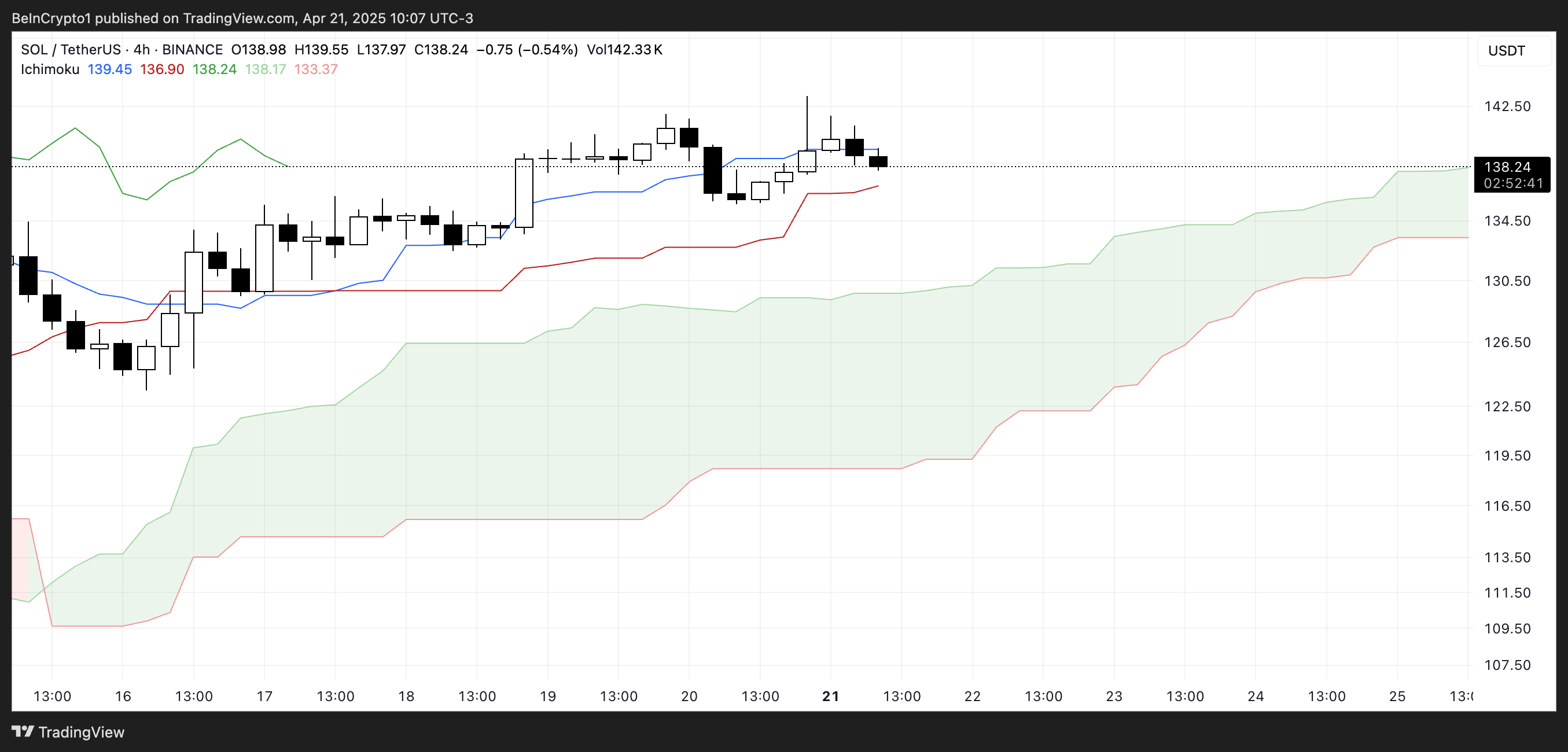
The overall Ichimoku structure remains bullish, with a thick, rising cloud and leading span A well above span B—indicating strong underlying support.
If Solana finds support at the Kijun-sen and climbs back above the Tenkan-sen, the uptrend could regain strength; otherwise, a test of the cloud’s upper boundary may follow.

Meanwhile, Solana’s BBTrend is currently at 6, extending nearly ten days in positive territory after peaking at 17.5 on April 14. The recent increase from 4.26 to 6 suggests renewed bullish momentum following a brief cooldown.
BBTrend, or Bollinger Band Trend, tracks the strength of price movement based on Bollinger Band expansion.
Positive values like the current one point to an active uptrend, and if the BBTrend continues to rise, it could signal stronger momentum and potential for another upward move.
Solana Dominates DEX Volume and Fee Generation as Meme Coins Drive Ecosystem Growth
Solana has once again claimed the top spot among all chains in DEX volume, recording $15.15 billion over the past seven days. The combined total of Ethereum, BNB, Base, and Arbitrum reached $22.7 billion.

In the last 24 hours alone, Solana saw $1.67 billion in volume, largely fueled by its booming meme coin ecosystem and the ongoing launchpad battle between PumpFun and Raydium. Adding to this good momentum, Solana recently surpassed Ethereum in Staking Market Cap.

When it comes to application fees, Solana’s momentum is just as clear. Four of the top ten fee-generating apps over the past week—PumpFun, Jupiter, Jito, and Meteora—are Solana-focused.
Pump leads the pack with nearly $18 million in fees alone.
Solana Breaks Key Resistance as Uptrend Targets Higher Levels, but Risks Remain
Solana has finally broken above its key resistance at $136, flipping it into a new support level that was successfully tested just yesterday.
Its EMA lines remain aligned in a bullish setup, suggesting the uptrend is still intact.
If this momentum continues, SOL price could aim for the next resistance zones at $147 and $152—levels that, if breached, open the door to a potential move toward $179.
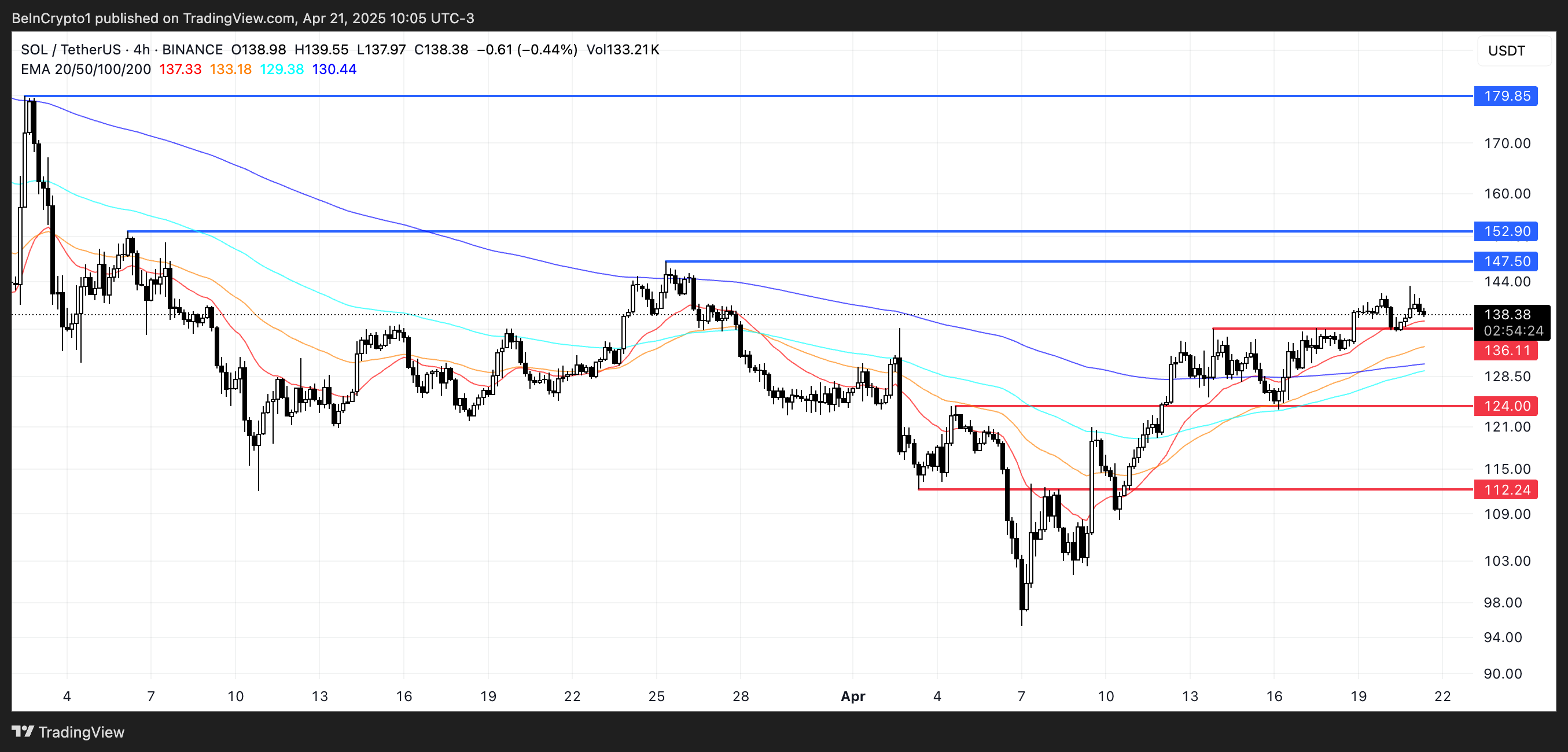
The current structure favors buyers, with higher lows and strong support reinforcing the trend.
However, if momentum fades, a retest of the $136 support is likely.
A breakdown below that level could shift sentiment, exposing Solana to deeper pullbacks toward $124 and even $112.
Disclaimer
In line with the Trust Project guidelines, this price analysis article is for informational purposes only and should not be considered financial or investment advice. BeInCrypto is committed to accurate, unbiased reporting, but market conditions are subject to change without notice. Always conduct your own research and consult with a professional before making any financial decisions. Please note that our Terms and Conditions, Privacy Policy, and Disclaimers have been updated.
Market
Crypto Firms Donated $85 million in Trump’s Inauguration
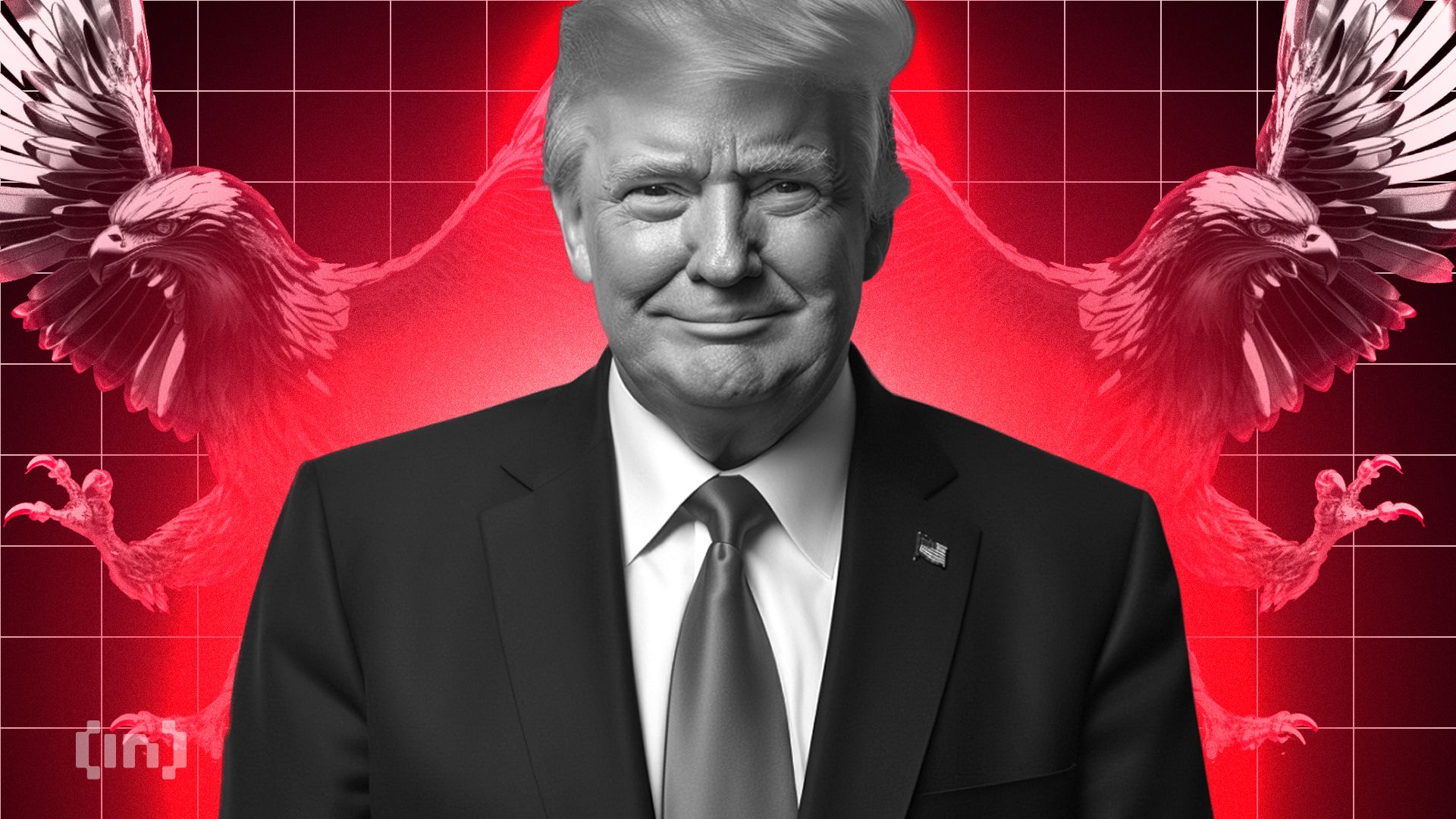
According to a new report, 15 firms and individuals from the crypto industry donated more than $100,000 to President Trump’s Inauguration, totaling over $85 million.
Almost all of these companies apparently received direct or indirect benefits from Trump’s administration. This includes dropped legal proceedings, lucrative business partnerships, participation in Trump’s Crypto Summit, and more.
Crypto Industry Went All-In on Trump’s Inauguration
Since promising to bring friendlier regulations on the campaign trail, Donald Trump attracted a reputation as the Crypto President.
Trump’s Inauguration festivities included a “Crypto Ball,” and several prominent firms made donations for these events. Today, a report has compiled all crypto-related contributions of over $100,000, revealing some interesting facts.

Since taking office, President Trump and his family have been allegedly involved in prominent crypto controversies, and these donations may be linked to several of them.
For example, eight of the donors, Coinbase, Crypto.com, Uniswap, Yuga Labs, Kraken, Ripple, Robinhood, and Consensys, had SEC investigations or lawsuits against them closed since Trump’s term began.
The commission might have dropped its probe against these companies anyway due to its changing stance on crypto enforcement. However, being in the President’s good books likely helped the process.
Further Alleged Benefits for Donors
In other words, nearly half the firms that made donations to Trump’s Inauguration have seen their legal problems cleared up quickly. This isn’t the only regulation-related benefit they allegedly received.
Circle, for example, recently made an IPO after openly stating that Trump’s Presidency made it possible. Galaxy Digital received SEC approval for a major reorganization, a key step for a NASDAQ listing.
Other donors, such as Crypto.com and ONDO, got more direct financial partnerships with businesses associated with the Trump family.
Previously, Ripple’s CEO, Brad Garlinghouse, anticipated a crypto bull market under Trump. Also, XRP, Solana, and Cardano were all unexpectedly included in the US Crypto Reserve announcement.
All three of these companies made major donations to Trump’s Inauguration.
It seems that most of the firms involved got at least some sort of noticeable benefit from these donations. Donors like Multicoin and Paradigm received invitations to Trump’s Crypto Summit, while much more prominent groups like the Ethereum Foundation got snubbed.
Meanwhile, various industry KOLs and community members have already alleged major corruption in Trump’s crypto connections.
While some allegations might lack substantial proof, the crypto space has changed dramatically under the new administration, for both good and bad.
Disclaimer
In adherence to the Trust Project guidelines, BeInCrypto is committed to unbiased, transparent reporting. This news article aims to provide accurate, timely information. However, readers are advised to verify facts independently and consult with a professional before making any decisions based on this content. Please note that our Terms and Conditions, Privacy Policy, and Disclaimers have been updated.


